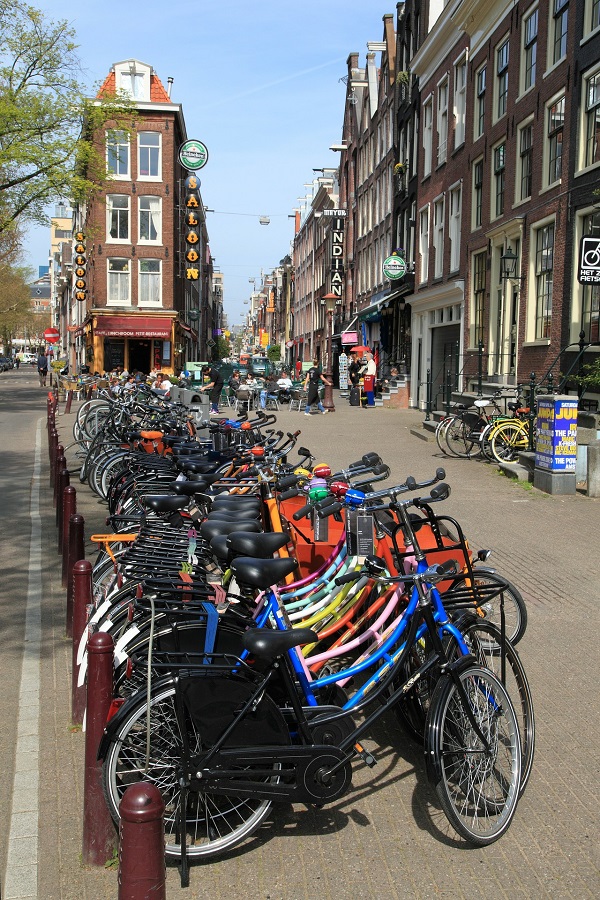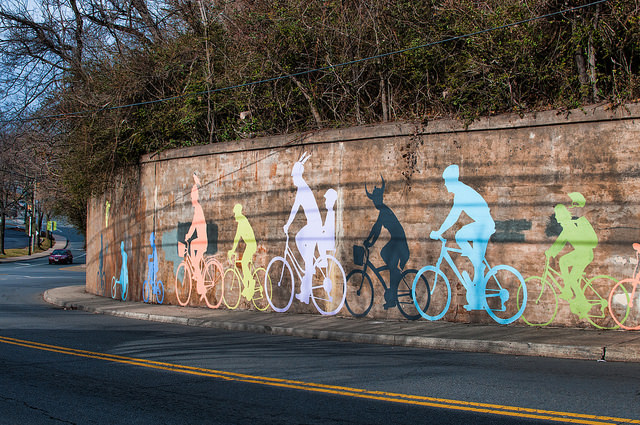Building Ourselves Fat
Guest author: Jo Ellis, Blue Kayak and Northumbria University.
We all know that it’s bad to be too fat, don’t we? Voices on every side tell us so, particularly those of us who are female. On our right, there is the medical profession, predicting furred arteries, overloaded joints and strokes; on our left, the Beauty Industry, telling us that Small is Beautiful; and all around us, in shop windows and clickbait and telly adverts and magazines, a whole economic sector dedicated to making us shed the pounds. Buy this book! Follow this programme! Join this gym! And if you don’t – you’ll be a fat lump with no mates, no dream job and definitely no sex, and it’ll all be Your Fault.
With all this pressure, it’s amazing that any of us are remotely plump. But, increasingly, we are not just plump, but obese -26% of us. (1) It’s been calculated that by 2050, Britain could be a “mainly obese” society (2).
Why’s this? Are we all so morally wretched? Well, there isn’t a single reason, of course. But we’re all affected by the environment we live in, and increasingly we’re coming to realise that we’re quite literally “shaped” by ours – that is, that we’re building ourselves fat. (3)
To illustrate, let’s imagine our friend Frieda Salad. Fortysomething, fourteen stone [89 kilos], Frieda lives in a sprawly new estate on the outskirts of town. The doctor tells her that she really ought to try to lose some weight, and hands her one of those cheery Change for Life leaflets with the Plasticine men on them.
“That’s all very well,” says Frieda, “but I just haven’t got time.”
The doctor fixes her with one of those quizzical “tell me more, and you’d better make it good,” looks.
“Well,” says Frieda, “I’m at work all day. Before I go to work I’ve got to drop the kids off at school. Then I drive to the office. It’s out on the industrial estate, so for lunch it’s the canteen or nothing – I’ve basically got to sit down all day, except in the lift –“
“Could you take the stairs?” says the doctor.
“Oh – erm – well, nobody does. There are some stairs, I suppose.”
“Ok,” says the doctor, tapping some notes into the computer. She’s had a few of these conversations.
“Then I drive home – pick the kids up from after-school club – normally I have to take them home to give them something to eat then take them out to gym or Scouts or whatever. Then I’ve just about got time to get home before I’ve got to get in the car to fetch them again. And, yeah, I suppose we do eat quite a bit of take-out, but once the kids are home, I can’t go out again till Mark gets home, and there aren’t any shops near me – it’s miles to anywhere. And the gym’s really expensive, and anyway, by the time we’ve eaten, I’m ready for bed.”
“Could you go for a walk round the block after you’ve eaten? Just for twenty minutes or so?”
“Well – you could – but there’s nowhere to go. Just estate roads, and all they go to is other bits of estate. I’d feel – a bit weird. Like a spy. And there’s no parks or anything.”
“Ok,” says the doctor, “so – the industrial estate’s only three miles from home, isn’t it? Could you bike it?”
“God, no!” says Frieda, shocked. “The roads near me are awful. Juggernauts, taxis – and at rush hour, it’s heaving. A lad was killed on the main road last year. I wouldn’t risk it!”
When Frieda leaves, the doctor rolls her eyes, and taps into the computer, “Discussed lifestyle. Little enthusiasm for change.”
Now let us consider Frieda’s sister Lena Thanher, whose living environment is very different. She lives in a close-packed Victorian suburb fairly close to town, with good cycling and walking routes (she probably doesn’t live in the UK) and with shops and school within walking distance and a nice local park.
Lena’s kids can walk to school by themselves, because the streets are safe, while Lena walks the dog in the park. Then she can cycle to work in the town centre. At lunchtime, she has plenty of opportunities to buy healthy food. She can also stop off on the way home to pick up fresh fruit and vegetables for dinner. Her kids are able to make their own way home and back out again to their various evening pastimes, so Lena is able to go out to an exercise class that runs in the school out of hours.
Lena doesn’t take more exercise than Frieda because Frieda is a lazy person. She doesn’t eat more fruit because she’s Being Good. It’s just that the place she lives in makes it easier for her. Poor Frieda – though she might be quite privileged in some ways – lives in a place which makes it harder to live a healthy lifestyle. It’s not just more effort. It’s time-consuming, perhaps stigmatising, perhaps expensive, and, more than likely, even dangerous. Frieda’s environment, we might say, is quintessentially “obesogenic.”
“Nice idea,” you might say, “but is it true?”
Well, yes, it is. We’ve got reams of evidence to suggest that, when it comes to active travel, the Field of Dreams advice “build it, and they will come,” applies. That is, where there are safe cycle routes, people will cycle. 27% of all trips in the Netherlands are made by bike, which has “at least 33,000 to 35,000 kilometres of dedicated cycling infrastructure.” (3). But figures can be higher in cities, and they can change. In the 1970s, Copenhagen was as car-oriented as anywhere else, but the authorities since then have gradually transformed the city to make it more cycle-friendly: 56% of Copenhageners use bicycles every day. (4)

Are UK cities fit for cycling? Here, bicycles in Amsterdam. Picture credits: Public domain, on Pixabay
As for public parks, associations have been shown between the quality and availability of urban green spaces and increased physical activity. (As well as this, green spaces have an effect upon mental health and sociability, help to screen out noise and air pollutants, and even boost the immune system.) (5)
People living in “walkable” cities are also less likely to be fat. Put simply, a “walkable” city is one where you can walk to wherever you want to go. They are likely to be quite closely-packed, so that everything is in close proximity. (6)They will have amenities like shops, schools and workplaces mixed in with houses and flats. They will have clear and direct street patterns, so that you can find your way around. (7) In a “sprawling” neighbourhood, however, like Frieda’s, there is nothing much to walk to; if there were any shop units within her estate, they couldn’t possibly survive, because there isn’t a critical mass of people within walking distance of them. Everyone, therefore, has to drive or be driven. (The same goes for rural areas – meaning that it’s quite wrong to suggest that people in the countryside have healthier lifestyles. They don’t.)
We know all this. So what are we doing about it?
The revised national Childhood Obesity Strategy, chapter 2 (9) was published for consultation recently. Now, you’d think it would make an effort, especially since the previous version was found to be inadequate. It might put aside money to fund those safe routes to school and those public open spaces. It might require all new development to look like an urbanist’s dream of a walkable suburb, complete with pavement cafes and little children pedalling blithely and bareheadedly to the park along the cycle routes.
But the Obesity Strategy is all words and no promises. It admits that “where we live... has a huge role to play in tackling childhood obesity. “ However, it lobs responsibility well and truly back into local authorities’ court: “Each local authority already has a range of powers to find local solutions to their own level of childhood obesity but while some are already taking bold action, others are not.” There is hardly a word about the specific design features that encourage active travel. There’s nothing substantive about empowering local authorities to require those features, at a time when developers are able to plead “lack of viability” when asked to build anything but Barratt boxes. And the funding the Strategy allocates to active travel to school - £1.62 million – would barely buy you a two-bed semi in some parts of London.
Of course obesity isn’t just a matter of environment. I’m sure there are people in compact little Dutch towns with miles of cycleway who sit around in their pants eating chips all day. But, given the increasing body (ha, ha) of evidence on obesogenic environments, the doctor’s eye-roll at poor Frieda’s lack of exercise begins to look a bit like victim-blaming.
Ok, so we can’t rebuild the city from scratch – and we wouldn’t want to. But we can change it. We can put in cycling and walking routes, calm the traffic, make sure our parks are attractive and welcoming, keep up our local schools, support community centres that run exercise classes, support local businesses in residential areas. And we can make sure that healthy lifestyles are planned into all new development from the very beginning.
We have planned ourselves fat for too long. It’s time to plan ourselves fit.

Planning ourselves fit could be just round the corner. Picture credits: "Cycling mural on Market St. Charlottesville", by Bob Mical on Flickr, Non-Commercial Creative Commons Attribution
References
- NHS Digital.Statistics on Obesity, Physical Activity and Diet - England, 2018. [Online] https://digital.nhs.uk/data-and-information/publications/statistical/statistics-on-obesity-physical-activity-and-diet/statistics-on-obesity-physical-activity-and-diet-england-2018.
- Butler, Bryony.Foresight: Tackling obesities - future choices. London : Government Office for Science, 2007.
- Lake, Amelia A, Townshend, Tim G and Alvanides, Seraphim.Obesogenic environments : complexities, perceptions, and objective measures. Chichester : Blackwell, 2010.
- Bicycle Dutch.Dutch Cycling Figures. [Online] 2018. https://bicycledutch.wordpress.com/2018/01/02/dutch-cycling-figures/.
- Copenhagenize.Meteoric Rise in Bicycle Traffic in Copenhagen. [Online] 2016. http://www.copenhagenize.com/2016/11/meteoric-rise-in-bicycle-traffic-in.html.
- WHO Regional Office for Europe,.Urban green spaces and health: a review of evidence. Copenhagen : s.n., 2016.
- Land use, transport, and population health: estimating the health benefits of compact cities.Stevenson, Mark et al. 10062, s.l. : The Lancet, 2016, Vol. 388.
- City planning and population health: a global challenge.Giles-Corti B, Vernez-Moudon A, Reis R, Turrell G, Dannenberg AL, Badland H, Foster S, Lowe M, Sallis JF, Stevenson M, Owen N. 10062, s.l. : The Lancet, 2016, Vol. 388.
- Department of Health and Social Care: Global Public Health Directorate: Obesity, Food and Nutrition / 10800.Childhood obesity: a plan for action, Chapter 2. London : HM Government, 2018
Jo Ellis is a researcher and freelance planning consultant in Newcastle upon Tyne. She has a particular interest in sustainable cities and transport.

When you subscribe to the blog, we will send you an e-mail when there are new updates on the site so you wouldn't miss them.


Comments 1
[…] Ellis provided an engaging, humorous and topical account the detrimental effects of the urban built environment on human well-being, framed around public health, car-dependency, and unsatisfactory opportunities for active mobility […]